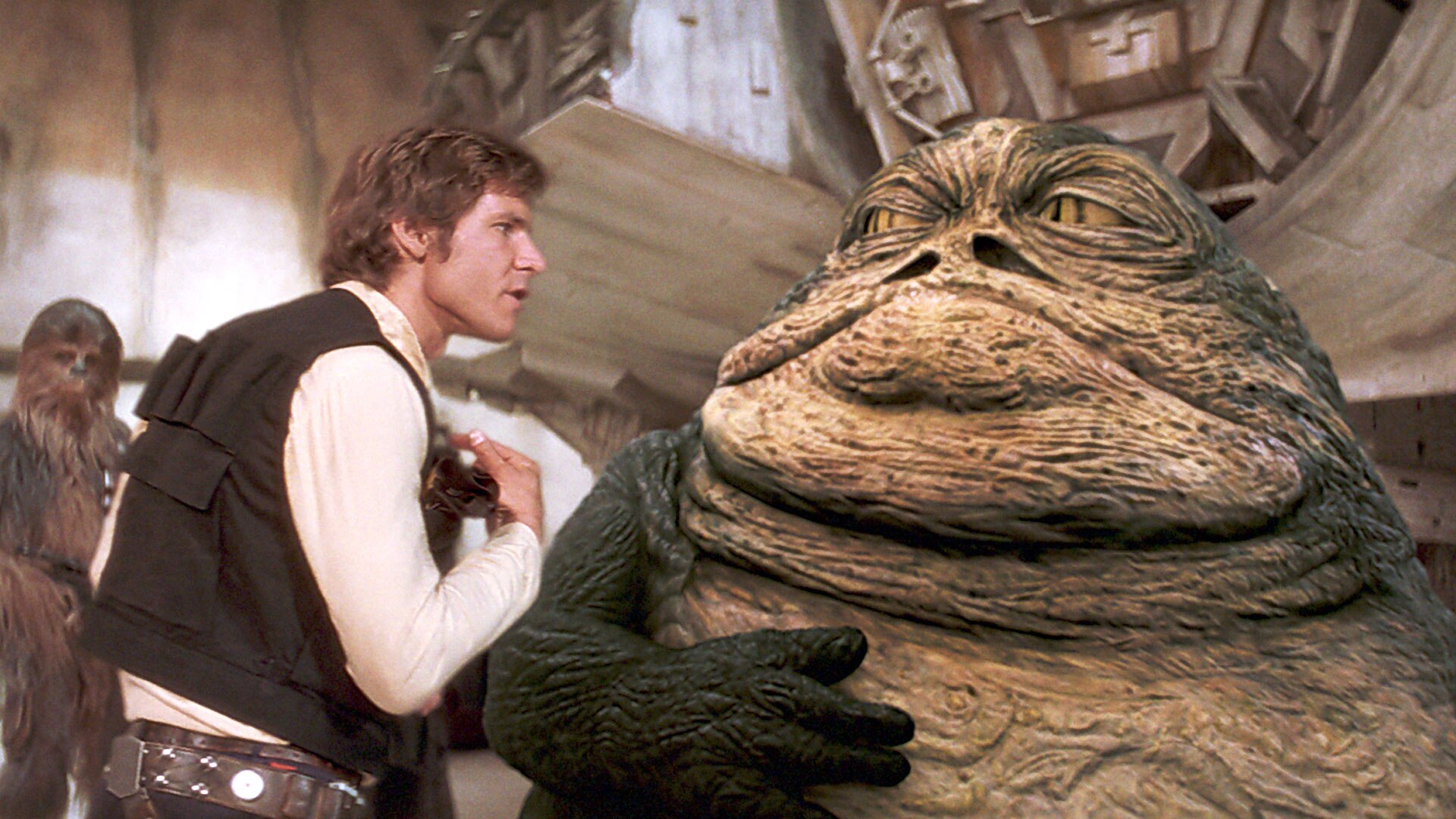Vista Vision (8 perf horizontal) as roughly equivalent to 4K with Eastman 5247, which was a common filmstock used in that era. Release prints, which is what you saw in theatres, would be slightly better than 2K,IF there were a low amount of optical composites in the film (and the titles would count, typically). Terminator 2 VFX shots at ILM were at 1920 by 1080, and up-rezzed to 2K, as that extra amount saved in render time was necessary (quicker to up-res than to render).
At ILM, shots would originate on 8 perf, and go through the optical printer, ultimately getting reduced to 4 perf, a significantly lower res format (in terms of pixels). Many shots were multi-layer composites, which would degrade the quality of each generation (comp layer) even more. And that work was done on what many considered state of the art optical printers in that time.
For contrast, some shots in Special Edition took the original Vista Vision elements, scanned and recomped them digitally, such as several shots in the death star trench with the TIE fighters and X Wings. They were not all CG redoes. I do not know what metric was used to determine re-comps vs, CG redoes, though I consider the shot of the X Wings opening the S foils in the SE to be far superior to what was done for the original film (which appeared to be the same element repeated and reduced several times.) Other than that, they should have left it alone...
So, to simplify, motion control (aka "Dykstraflex") VFX before CG went like this: original photography of elements (first generation, highest quality). Combination of elements together (optical or bipack).Optical degraded the image down to second generation for one comp pass. Additional passes would drop generations even more. If bipack comped, also known as in-camera, exposed elements would be backwound, holdout mattes would be made (if possible), and additional elements would be exposed into unexposed portions of the film negative, thus reducing quality-loss. More expensive budgets would allow for composites on "interpositive stock," which was a fine-grained, low contrast stock. This would help to minimize contrast and grain build up from comping.
Oh, and if the lab screwed up your dailies overnight, you had to reshoot, as there would be no way to save anything.
Yeah, it basically sucked back then...



